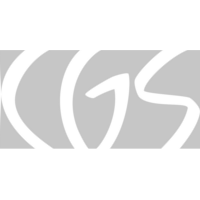







| Authors: |
Anna
Dargiewicz

Uniwersytet Warmińsko-Mazurski w Olsztynie |
| Keywords: | Linguistic landscape urban/public space creativity word formation corpus |
| Whole issue publication date: | 2024 |
| Page range: | 20 (75-94) |
| Downloads ?: | 185 |
| 1. | Auer, Peter. (2010). Sprachliche Landschaften. Die Strukturierung des öffentlichen Raums durch die geschriebene Sprache. In Arnulf Deppermann; Angelika Linke (Hrsg.), Sprache intermedial – Stimme und Schrift, Bild und Ton (271–298). De Gruyter. |
| 2. | Backhaus, Peter. (2007). Linguistic Landscapes. A Comparative Study of Urban Multilingualism in Tokyo. Multilingual Matters. |
| 3. | Cenoz, Jasone; Gorter, Durk. (2008). The Linguistic Landscape as an Additional Source of Input in Second Language Acquisition. IRAL 46(3), 267–287. |
| 4. | Dargiewicz, Anna. (2013). Fremde Elemente in Wortbildungen des Deutschen: Zu Hybridbildungen in der deutschen Gegenwartssprache am Beispiel einer raumgebundenen Untersuchung in der Universitäts- und Hansestadt Greifswald. Peter Lang Verlag. |
| 5. | Dargiewicz, Anna. (2021). Wort-Bild-Kombinationen. Zu Hybridformen im deutschsprachigen öffentlichen Raum. Germanistische Werkstatt 11, 41–62. |
| 6. | Dargiewicz, Anna; Choromański, Maciej. (2022). Wie kann sich die Sprache an die bestehende Wirklichkeit anpassen? Eine sprachliche Momentaufnahme neuartiger Corona-Komposita anhand des deutschen Online-Nachrichtenportals DER SPIEGEL. In Anna Just; Piotr A. Owsiński; Andrzej S. Feret (Hrsg.), Betrachtungen zur diachronen und synchronen Linguistik (37–61). Peter Lang Verlag. |
| 7. | Fleischer, Wolfgang; Barz, Irmhild. (2012). Wortbildung der deutschen Gegenwartssprache (4. völlig neu bearbeitete Aufl.). De Gruyter Studium. |
| 8. | Gilles, Peter; Ziegler, Evelyn. (2019). Linguistic Landscape-Forschung in sprachhistorischer Perspektive: Zur Entwicklung visueller Kommunikate im öffentlichen Raum der Stadt Luxemburg im langen 19. Jahrhundert. Zeitschrift für germanistische Linguistik 47(2), 385–407. |
| 9. | Gorter, Durk. (2006). Introduction: The study of the linguistic landscape as a new approach to multilingualism. International Journal of Multilingualism 3(1), 1–6. |
| 10. | Holly, Werner. (2009). Der Wort-Bild-Reißverschluss. Über die performative Dynamik der audiovisuellen Transkriptivität. In Helmut Feilke; Angelika Linke (Hrsg.), Oberfläche und Performanz (389–406). Niemeyer. |
| 11. | Kątny, Andrzej. (1997). Die deverbalen „-bar“-Adjektive im Deutschen und deren Entsprechungen im Polnischen. Studia Germanica Posnaniensia 23, 83–95. |
| 12. | Kiese-Himmel, Christiane. (2020). Was neu im Duden steht. Alltagssprache im Wandel – Der Wortschatz wächst aber nicht nur. Der Sprachdienst 6(64), 285–288. |
| 13. | Kobler-Trill, Dorothea. (1994, Reprint 2013). Das Kurzwort im Deutschen. Eine Untersuchung zu Definition, Typologie und Entwicklung. Niemeyer. |
| 14. | Landry, Rodrigue; Bourhis, Richard Y. (1997). Linguistic landscape and ethnolinguistic vitality: an empirical study. Journal of Language and Social Psychology 16(1), 23–49. |
| 15. | Metten, Thomas. (2011). Schrift-Bilder – Über Graffitis und andere Erscheinungsformen der Schriftbildlichkeit. In Hajo Diekmannshenke; Michael Klemm; Hartmut Stöckl (Hrsg.), Bildlinguistik. Theorien – Methoden – Fallbeispiele (73–93). Erich Schmidt Verlag. |
| 16. | Shohamy, Elana; Gorter, Durk. (2009). Linguistic landscape. Expanding the scenery. Routledge. |
| 17. | Das große Jubierläum. (o. D.). https://jubierlaeum.de. |
| 18. | Die MachBar. Der Raum für Selbermacher. (o. D.). https://die-machbar.com/ueber-die-machbar. |
| 19. | Duden. Rechtschreibung (o. D.). https://www.duden.de/rechtschreibung. |
| 20. | Link, Christoph. (2017, 19. Oktober) Nahverkehrszüge in Baden-Württemberg: „Bwegt“ löst Drei-Löwen-Takt ab. stuttgarter-zeitung.de. https://tiny.pl/wn9xx. |
| 21. | rewe-group.com (o. D.). https://www.rewe-group.com/de/unternehmen. |
| 22. | rossmann.de (o. D.). https://www.rossmann.de/de/neu/nachhaltigkeit. |
| 23. | Smiljanic, Mirko. (2023, 17. Februar). Folgen der Pandemie: Wie Corona die deutsche Sprache beeinflusst. https://tiny.pl/wnj5r. |
| 24. | Weber, Frauke. (2022, 29. Juli). #umdenkbar: REWE startet Kommunikation zu Nachhaltigkeit. https://mediacenter.rewe.de/pressemitteilungen/rewe-startet-umdenkbar. |